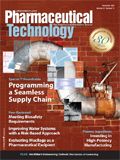Mixed Message for Contract Manufacturers
Candid comments from a Big Pharma executive highlight the complexity of contract manufacturing.
When a senior executive of AstraZeneca recently told the Times of London that the company would outsource all of its drug manufacturing within 10 years, the pharmaceutical contract manufacturing industry thought it had received unqualified validation from Big Pharma. David Smith, AstraZeneca's executive vice-president of operations, told reporter Robin Pagnamenta that manufacturing "is not a core activity" for the company, and admitted that there are a lot of organizations that are better at manufacturing.

Smith's radical perspective on remaking the pharma supply chain no doubt reflects his experience outside the pharmaceutical industry. After starting his career at Wellcome Foundation (a predecessor company to GlaxoSmithKline), Smith held positions at consumer products companies, including Estee Lauder and Timberland. Those hyper-competitive industries depend on complex global supply chains incorporating far-flung contract manufacturing operations.
Alas, AstraZeneca quickly backtracked from Smith's candid statements. The day after the Times article appeared, the company issued a clarification, stating that it is pursuing outsourcing "where there is a sound business case" and that its efforts are focused primarily on active pharmaceutical ingredients (APIs).

Jim Miller
Around the industry, Smith's comments are now interpreted not as a statement of corporate strategy, but rather as a "shot across the bow" aimed at people within the company who are resisting the changes that AstraZeneca must embrace. Like other major pharmaceutical companies, AstraZeneca is facing substantial revenue losses in the next five years as key products lose patent protection, and it must restructure its operations to survive. Because research anddevelopment (R&D) operations are viewed as critical to the replacement of those lost revenues, sales, manufacturing, and supply chain activities will bear the brunt of such restructuring efforts.
Complex calculus
Aside from the cultural resistance, pharma supply chain managers face a complex calculus when sorting out their supply-chain and manufacturing strategies (see Figure 1). The decision regarding whether to manufacture a product in-house or outsource must weigh a number of variables.

Figure 1
Basic supply considerations. Unit cost of goods, dependability of supply, and intellectual property protection are the most basic factors in making supply chain decisions. Costs are heavily impacted by the fixed cost nature of pharmaceutical manufacturing: the overhead of maintaining a facility's compliance with good manufacturing practices is largely the same regardless of the volume that runs through it. Unless a facility is to be closed or divested altogether, there is considerable pressure to put more products into it to absorb those fixed costs.
Financial considerations. A number of financial factors beyond direct manufacturing costs impact the supply decision. Corporate cash flow can be enhanced by shifting manufacturing to tax-advantaged locations or accepting the operating and capital investment subsidies offered in countries such as Ireland and Singapore. Exchange rate movements such as the current depreciation of the US dollar against the euro and other currencies, can shift cost advantage between manufacturing locations.
Regulatory considerations. Having a manufacturing or R&D operation in a particular country can ease regulatory approvals in that country, despite treaties establishing unified markets such as the European Union. Labor laws in many countries hinder the shutdown of noneconomic manufacturing facilities, causing companies to use in-house manufacturing assets that should really be shuttered.
Restructuring considerations. "Cost flexibility" is the new mantra of pharmaceutical executives, which usually translates into operations with fewer fixed costs. That development should favor contract manufacturers, but they often offset that advantage by insisting on "take-or-pay" agreements that limit their own downside.
Mixed models
The complex interplay of these variables probably means that it will never make sense for a major pharmaceutical company to outsource 100% of its manufacturing requirements. There will always be an argument to keep strategic products in-house, whether they be high volume blockbusters with substantial economies of scale or unique high-value technologies that shouldn't be shared.
What we will see, and are already seeing, is the emergence of sophisticated mixed sourcing models, which more effectively integrate contract manufacturers and in-house operations. Some major companies are already using such models to their advantage (e.g., Wyeth has long depended on contract manufacturing organizations[CMOs] for its API requirements, and Genentech has effectively used a mix of in-house and contract manufacturing operations). Innovative business models such as the one pioneered by Genentech (SouthSan Francisco, CA) and Lonza (Lonza, headquartered in Basel, Switzerland, will build and operate a cell culture facility dedicated to Genentech in Singapore, partially funded by local entities), will become more common.
Indeed, despite the backtracking in AstraZeneca's response to Smith's comments, the company is already well on its way to establishing a sophisticated sourcing model for its manufacturing requirements. Earlier this year, it established a sourcing center in Shanghai that will be the focus of its worldwide sourcing activities and by its own admission is actively establishing supply relationships in Asia and elsewhere. It is also divesting redundant facilities in its manufacturing network, most recently a parenteral manufacturing site in France that it sold to contract manufacturer Recipharm (Stockholm, Sweden).
Corporate politics and financial complexities notwithstanding, it's clear that some major pharmaceutical companies are committed to radically changing their supply-chain models. Now it's up to the CMOs to retool their business models to respond to the opportunity.
Jim Miller is president of PharmSource Information Services, Inc., and publisher of Bio/Pharmaceutical Outsourcing Report, tel. 703.383.4903, fax 703.383.4905, info@pharmsource.comwww.pharmsource.com.

Drug Solutions Podcast: A Closer Look at mRNA in Oncology and Vaccines
April 30th 2024In this episode fo the Drug Solutions Podcast, etherna’s vice-president of Technology and Innovation, Stefaan De Koker, discusses the merits and challenges of using mRNA as the foundation for therapeutics in oncology as well as for vaccines.